Quick Summary: Kitchen faucets typically last 10 to 15 years with proper care. However, lifespan varies based on quality, usage, and maintenance. High-end faucets with durable materials like brass can last longer, while cheaper models might only last a few years. Regular cleaning and prompt repairs can significantly extend your faucet’s life.
Is your kitchen faucet dripping, squeaking, or just plain worn out? Knowing how long your faucet should last can save you money and prevent unexpected plumbing headaches. It’s a common question for homeowners, and fortunately, understanding the factors that affect faucet lifespan is straightforward. You don’t need to be a plumbing expert to keep your kitchen sink in top shape.
In this guide, we’ll walk you through the typical lifespan of kitchen faucets, what affects their durability, and simple steps to extend their life. We’ll also cover when it’s time to repair versus replace, so you can make the best decision for your home. Let’s get started!
Factors Affecting Kitchen Faucet Lifespan
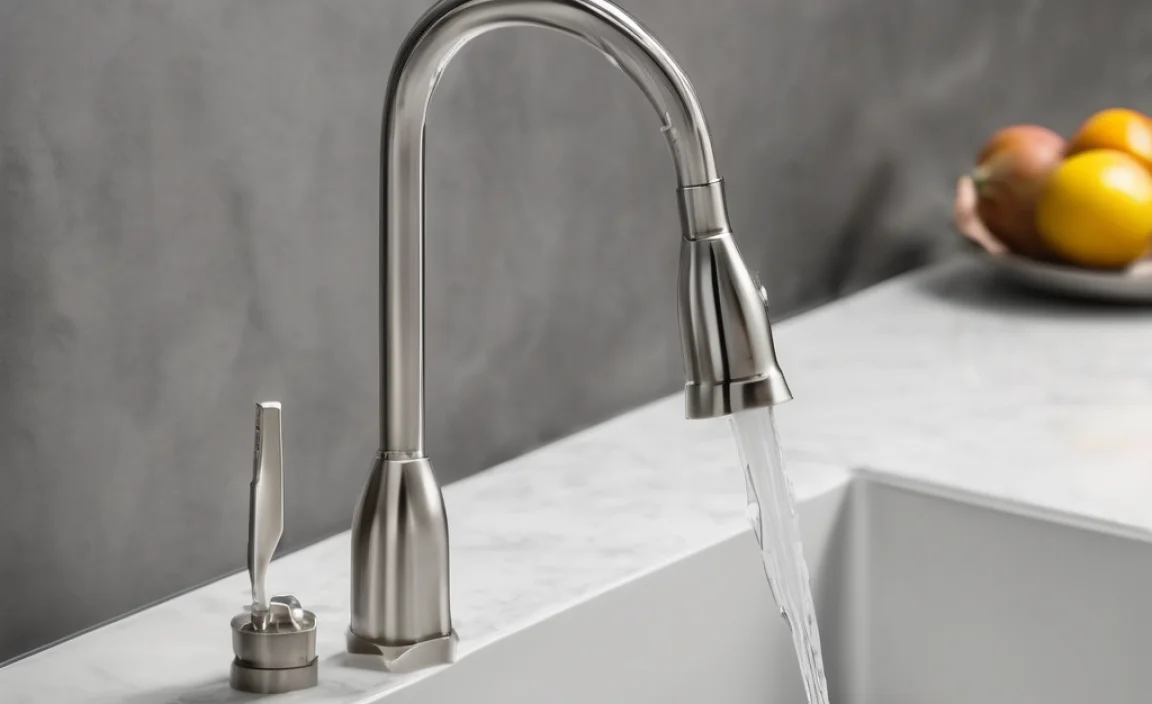
Several factors can influence how long your kitchen faucet lasts. Understanding these can help you make informed decisions about faucet selection and maintenance.
Material Quality
The materials used in your faucet’s construction play a significant role in its longevity. Here’s a breakdown:
- Brass: Known for its durability and resistance to corrosion, brass is a top choice for high-quality faucets.
- Stainless Steel: A good alternative to brass, stainless steel is also corrosion-resistant and durable.
- Zinc Alloy: Often used in cheaper faucets, zinc alloy is less durable than brass or stainless steel and more prone to corrosion.
- Plastic: Found in some faucet components, plastic is the least durable material and can break down over time.
Usage Frequency
How often you use your kitchen faucet directly impacts its lifespan. A faucet in a busy family home will experience more wear and tear than one in a vacation home.
- High Usage: Frequent use can lead to faster wear of internal components like cartridges and O-rings.
- Low Usage: Infrequent use can still cause problems, such as mineral buildup and stiffening of parts.
Water Quality
The quality of your water can significantly affect your faucet. Hard water, in particular, can cause mineral buildup that damages internal components.
- Hard Water: High mineral content can lead to scale buildup, reducing water flow and damaging the faucet.
- Soft Water: While generally better, very soft water can be corrosive to certain metals over time.
Maintenance Practices
Regular maintenance can extend the life of your faucet. Simple tasks like cleaning and checking for leaks can make a big difference.
- Regular Cleaning: Prevents mineral buildup and corrosion.
- Leak Repair: Addressing leaks promptly prevents water damage and further wear.
- Proper Handling: Avoid excessive force when turning handles to prevent damage.
Installation Quality
A poorly installed faucet is more likely to develop problems. Proper installation ensures all connections are secure and that the faucet is correctly supported.
- Professional Installation: Reduces the risk of leaks and other installation-related issues.
- DIY Installation: Can be successful if done carefully, but improper techniques can shorten the faucet’s lifespan.
Typical Lifespan of Kitchen Faucets
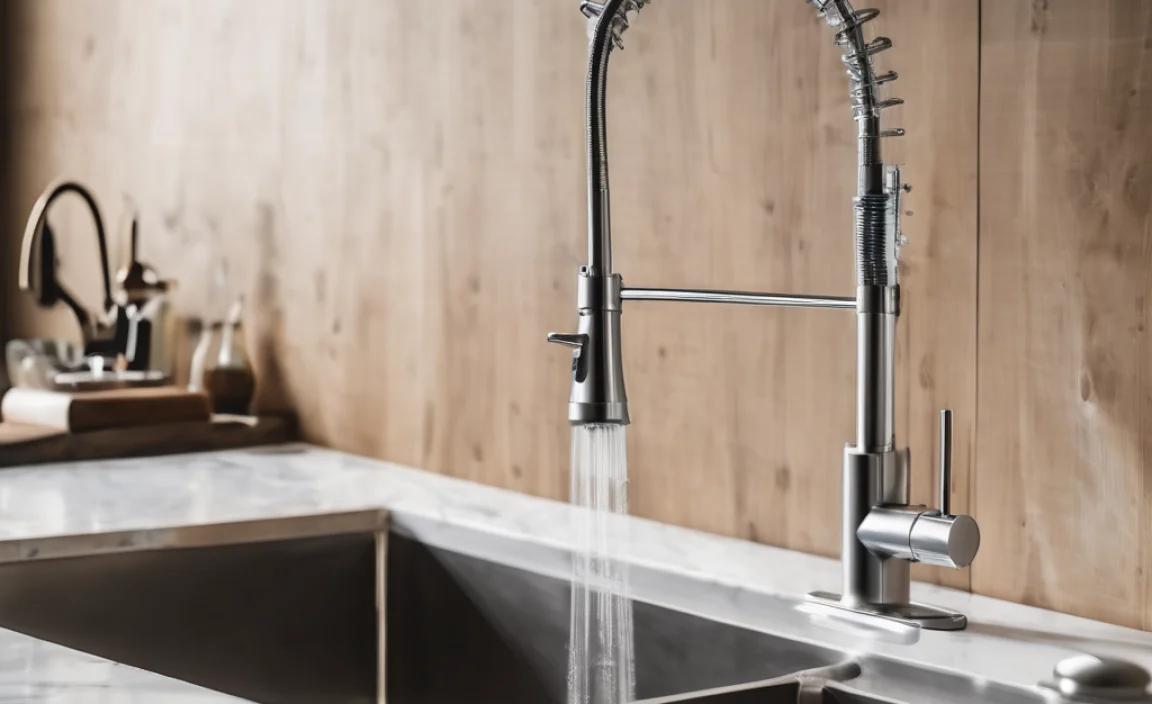
Understanding the average lifespan of different types of kitchen faucets can help you set realistic expectations and plan for replacements. Here’s a general guide:
Low-End Faucets
These faucets are typically made from cheaper materials like zinc alloy and plastic. They are more affordable but tend to have a shorter lifespan.
- Lifespan: 2-5 years
- Characteristics: Prone to leaks, corrosion, and breakage.
- Best For: Light use or temporary solutions.
Mid-Range Faucets
Mid-range faucets offer a balance of quality and affordability. They often feature a mix of brass and stainless steel components.
- Lifespan: 5-10 years
- Characteristics: More durable than low-end faucets, with better resistance to leaks and corrosion.
- Best For: Average household use.
High-End Faucets
High-end faucets are made from premium materials like solid brass and feature advanced designs and finishes. They are built to last and often come with extended warranties.
- Lifespan: 10-20 years or more
- Characteristics: Highly durable, resistant to corrosion, and often come with advanced features.
- Best For: Heavy use and long-term reliability.
Factors Affecting Lifespan Chart
| Factor | Low-End Faucets | Mid-Range Faucets | High-End Faucets |
|---|---|---|---|
| Material Quality | Zinc Alloy, Plastic | Mixed Brass and Stainless Steel | Solid Brass, High-Quality Finishes |
| Usage Frequency | Short Lifespan Under Heavy Use | Moderate Lifespan Under Heavy Use | Long Lifespan Under Heavy Use |
| Water Quality | Prone to Corrosion and Mineral Buildup | Better Resistance to Mineral Buildup | Excellent Resistance to Corrosion and Buildup |
| Maintenance | Requires Frequent Maintenance | Requires Regular Maintenance | Requires Minimal Maintenance |
| Installation | More Susceptible to Issues from Poor Installation | Less Susceptible to Installation Issues | Least Susceptible to Installation Issues |
Signs Your Kitchen Faucet Needs Replacement
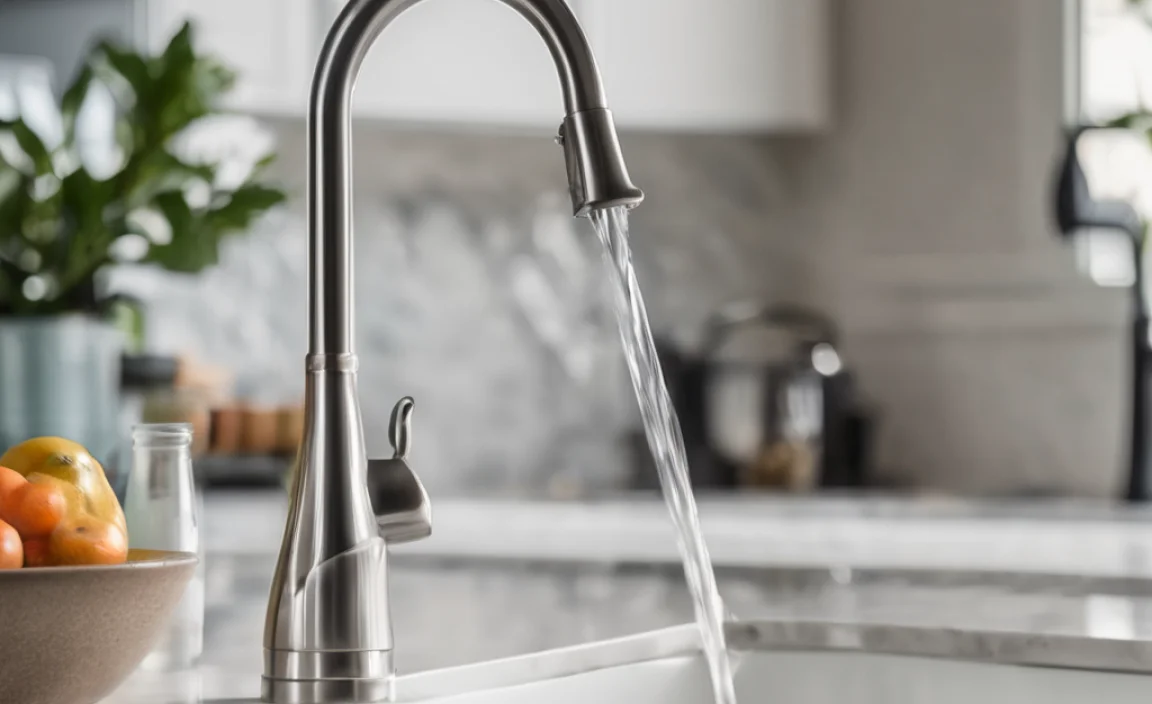
Knowing when to replace your kitchen faucet can prevent further damage and inconvenience. Here are some common signs that it’s time for a new faucet:
- Constant Leaks: Persistent dripping, even after repairs, indicates worn-out parts or corrosion.
- Reduced Water Flow: Mineral buildup or internal damage can restrict water flow.
- Visible Corrosion: Rust or corrosion on the faucet body or handles is a sign of deterioration.
- Stiff Handles: Difficulty turning the handles can indicate worn cartridges or valve seats.
- Cracks or Damage: Visible cracks or physical damage to the faucet body.
- Age: If your faucet is over 10-15 years old, it may be nearing the end of its lifespan, regardless of its condition.
Extending the Life of Your Kitchen Faucet
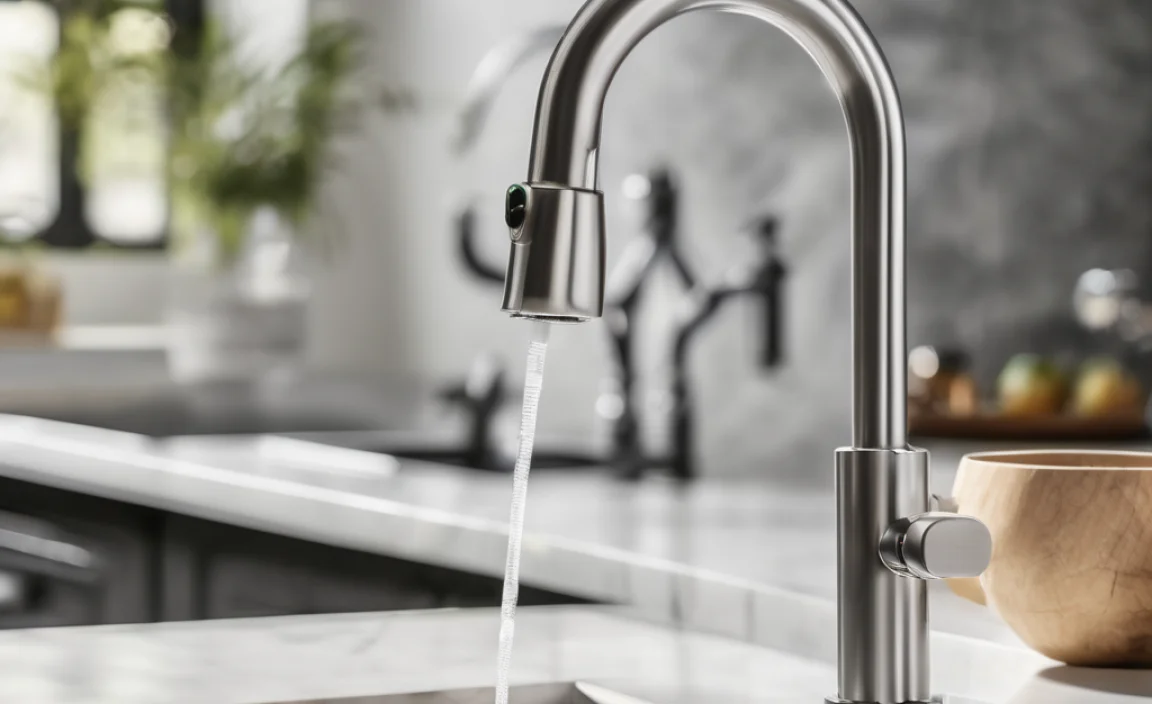
You can take several steps to extend the life of your kitchen faucet and keep it functioning properly.
Regular Cleaning
Cleaning your faucet regularly prevents mineral buildup and corrosion. Use mild soap and water, and avoid abrasive cleaners that can damage the finish.
- Wipe Down Daily: Use a soft cloth to wipe down the faucet after each use.
- Deep Clean Weekly: Use a mixture of vinegar and water to remove mineral deposits.
- Avoid Abrasives: Do not use harsh chemicals or abrasive scrub pads.
Proper Usage
Handle your faucet with care to prevent unnecessary wear and tear. Avoid using excessive force when turning the handles.
- Gentle Handling: Turn handles gently to avoid damaging internal components.
- Avoid Over-Tightening: Do not overtighten handles or sprayers.
- Use Correct Tools: When making repairs, use the appropriate tools to avoid damaging the faucet.
Leak Repair
Address leaks promptly to prevent water damage and further wear on the faucet. Small leaks can often be fixed by replacing worn-out parts like O-rings or cartridges.
- Identify the Source: Determine where the leak is coming from.
- Gather Supplies: Collect necessary tools and replacement parts.
- Turn Off Water: Shut off the water supply before starting repairs.
- Replace Worn Parts: Replace O-rings, cartridges, or other damaged components.
Water Softener
If you have hard water, consider installing a water softener to reduce mineral buildup in your plumbing system and extend the life of your faucet.
- Reduces Mineral Buildup: Prevents scale from forming inside the faucet.
- Improves Water Quality: Makes water gentler on your plumbing and appliances.
- Saves Money: Reduces the need for frequent repairs and replacements.
Regular Inspection
Periodically inspect your faucet for signs of wear and tear. Check for leaks, corrosion, and stiff handles.
- Check for Leaks: Look for drips around the base and spout.
- Inspect Handles: Make sure handles turn smoothly and are not loose.
- Examine Finish: Check for signs of corrosion or damage to the finish.
Repair vs. Replace: Making the Right Choice
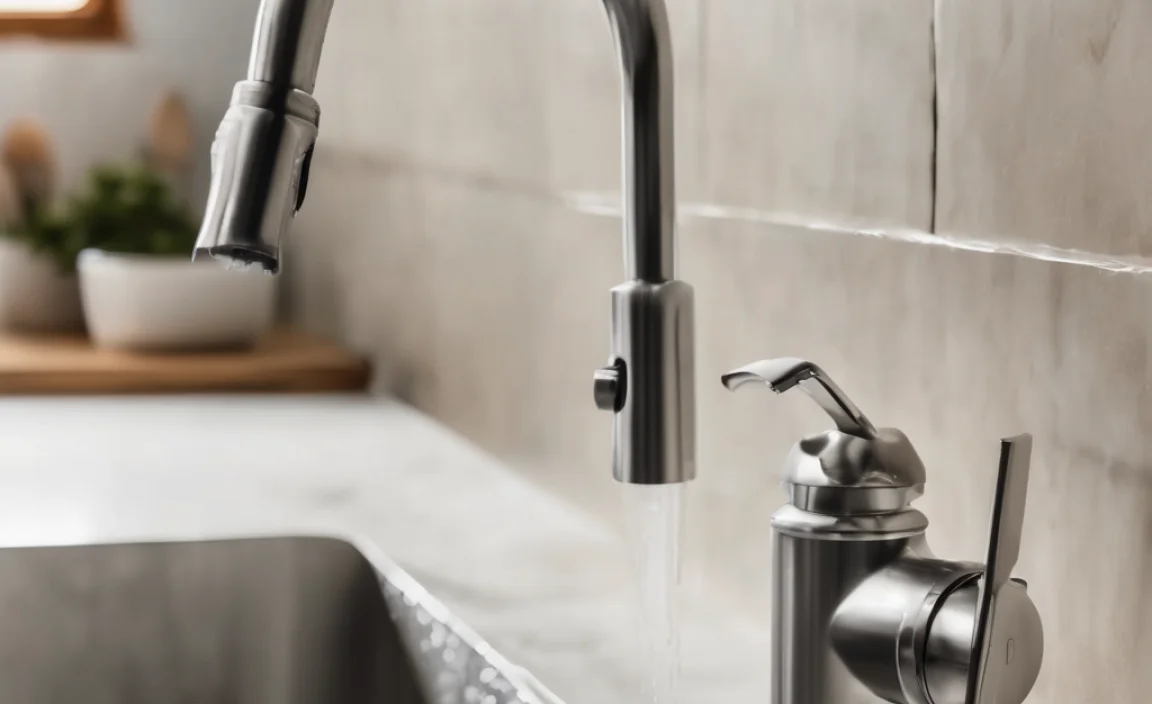
Deciding whether to repair or replace your kitchen faucet depends on the extent of the damage, the age of the faucet, and your budget.
When to Repair
Repairing your faucet is a good option if the problem is minor and the faucet is relatively new.
- Minor Leaks: Replacing O-rings or cartridges can often fix small leaks.
- Stiff Handles: Replacing cartridges or valve seats can improve handle movement.
- Simple Repairs: If the problem is easy to diagnose and fix, repair is a cost-effective solution.
When to Replace
Replacing your faucet is the better choice if the damage is extensive, the faucet is old, or repairs are becoming frequent.
- Extensive Damage: Cracks, corrosion, or significant damage to the faucet body warrant replacement.
- Old Age: If the faucet is over 10-15 years old, it may be nearing the end of its lifespan.
- Frequent Repairs: If you are constantly repairing the faucet, replacement may be more cost-effective in the long run.
- Upgrade: Replacing an old faucet allows you to upgrade to a more efficient and stylish model.
Cost Comparison
Consider the cost of repairs versus replacement. Minor repairs can be inexpensive, but extensive repairs can quickly add up. A new faucet may be a better investment in the long run.
| Option | Pros | Cons | Estimated Cost |
|---|---|---|---|
| Repair | Cheaper for minor issues, extends current faucet life | Can be temporary fix, may require repeated repairs | $10 – $100+ (depending on parts) |
| Replace | New warranty, updated style, potentially more efficient | Higher upfront cost, requires installation | $50 – $500+ (plus installation if needed) |
Choosing a New Kitchen Faucet
If you decide to replace your kitchen faucet, consider these factors when selecting a new one.
Material
Choose a faucet made from durable materials like brass or stainless steel. These materials are resistant to corrosion and will last longer.
Style
Select a faucet that complements your kitchen décor. Consider factors like finish, shape, and handle style.
Features
Look for features that meet your needs, such as pull-down sprayers, touchless operation, and water-saving technology.
Brand
Choose a reputable brand known for quality and reliability. Read reviews and compare models before making a decision.
Installation
Consider whether you will install the faucet yourself or hire a professional. Some faucets are easier to install than others.
FAQ: Kitchen Faucet Lifespan
Here are some frequently asked questions about the lifespan of kitchen faucets.
How long should a kitchen faucet last?
A good quality kitchen faucet should last between 10 to 15 years with proper maintenance.
What causes a kitchen faucet to fail?
Common causes include mineral buildup, corrosion, worn-out parts (like O-rings and cartridges), and physical damage.
Can hard water affect my kitchen faucet?
Yes, hard water can cause mineral buildup that reduces water flow and damages internal components, shortening the faucet’s lifespan.
Is it better to repair or replace a leaky faucet?
If the leak is minor and the faucet is relatively new, repairing it is a good option. If the damage is extensive or the faucet is old, replacement is usually better.
How can I extend the life of my kitchen faucet?
Regular cleaning, proper usage, prompt leak repair, and installing a water softener (if you have hard water) can all help extend the life of your faucet.
What are the best materials for a long-lasting kitchen faucet?
Brass and stainless steel are the best materials for durability and resistance to corrosion.
Is it worth buying an expensive kitchen faucet?
While more expensive upfront, high-end faucets often last longer and require fewer repairs, making them a worthwhile investment in the long run.
Conclusion
Understanding how long kitchen faucets last and the factors that influence their lifespan empowers you to make informed decisions about maintenance, repair, and replacement. By choosing quality materials, practicing regular maintenance, and addressing issues promptly, you can extend the life of your faucet and keep your kitchen running smoothly. Whether you’re dealing with a minor leak or considering a complete upgrade, remember that a little care can go a long way in ensuring your kitchen faucet stands the test of time.




